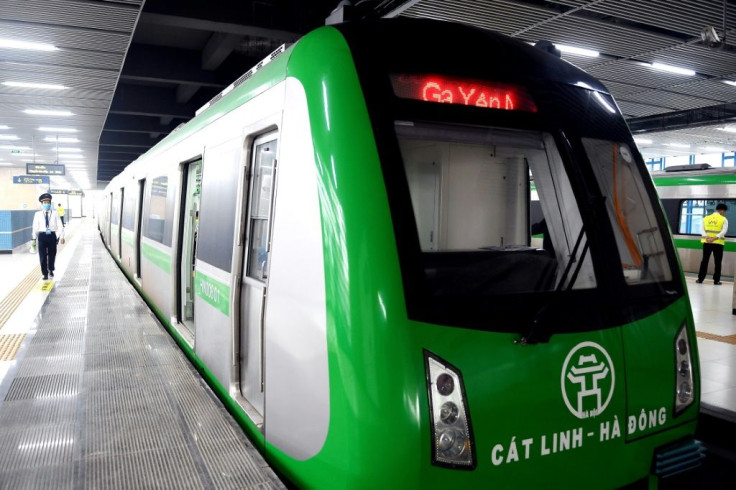Motorbike-clogged Hanoi Rolls Out First Urban Railway
It's a city of more than five million motorbikes but Hanoi on Saturday opened its first ever urban railway line as authorities try to cut traffic and pollution that have long dogged the Vietnamese capital.
After years of delays and a near-doubling of construction costs, a train eased out of Cat Linh station, close to the centre of the city, to begin its 13-kilometre journey towards the densely populated east.

"I decided to give this a try because I was curious," Nguyen Thi Thu told AFP inside a busy carriage of the Chinese-made train.
"I am very happy to be able to take a ride after all the postponements."
Other passengers showed up early to strike a pose in front of the shiny new train, while young children on board stared in wonder out of large windows at the Hanoi skyline rushing past.

The buzzing capital of nine million people is known the world over for its dense crowds of motorbikes that fill the city's streets and make life perilous for pedestrians attempting to cross.
The number of bikes on the roads has soared from two million in 2008 to 5.7 million in 2020, according to police.
The figure for cars has also rocketed in the same period, from 185,000 to 700,000.

Residents often spend hours stuck in queues, with few opting to catch the bus -- the only public transport option available until now.
The terrible traffic is also a major source of air pollution in the capital, according to Hanoi's department of environmental protection.
The city frequently records "unhealthy" AQI levels during the winter months.
Transport ministry official Vu Hong Son insisted Saturday the railway would address many of those issues.
It will help "ease traffic congestion, limit private vehicles, reduce environmental pollution and contribute to the change of inner-city movements", he said.
The Cat Linh-Ha Dong line has taken a decade to complete, with its construction interrupted several times due to safety issues and spiralling costs that have seen spending balloon to nearly $900 million from its original $550 million budget.
Nine more lines are planned for Hanoi by 2030, and authorities last month floated the idea of installing toll booths in the capital -- as well as business hub Ho Chi Minh City -- to charge cars wanting to enter.
But it remains unclear if residents will be easily parted from their bikes.
"It takes a long time to change people's habits," said Thu.
© Copyright AFP 2024. All rights reserved.





















